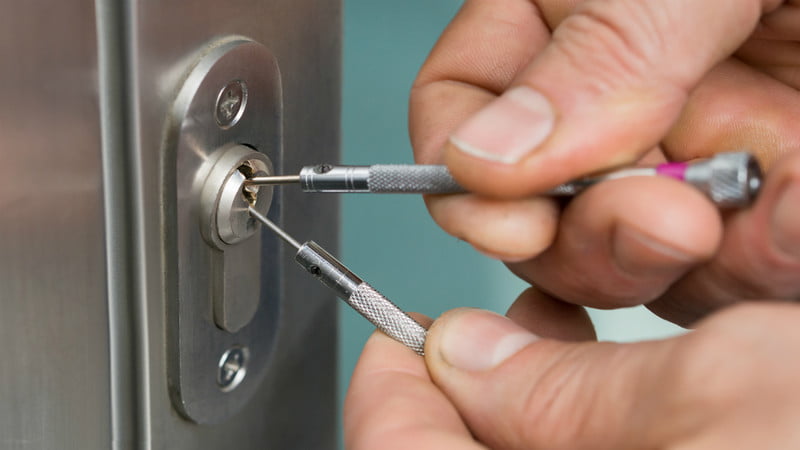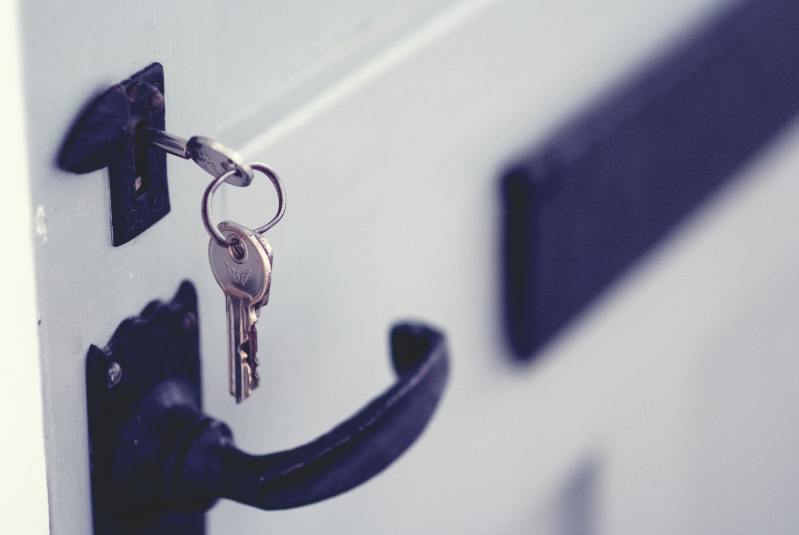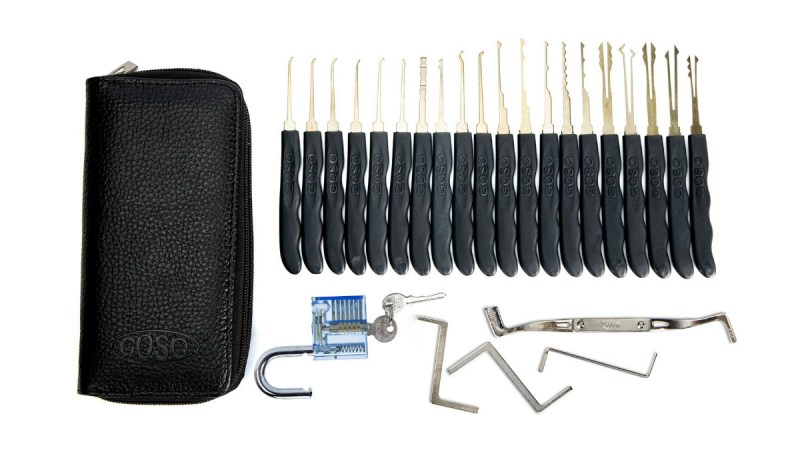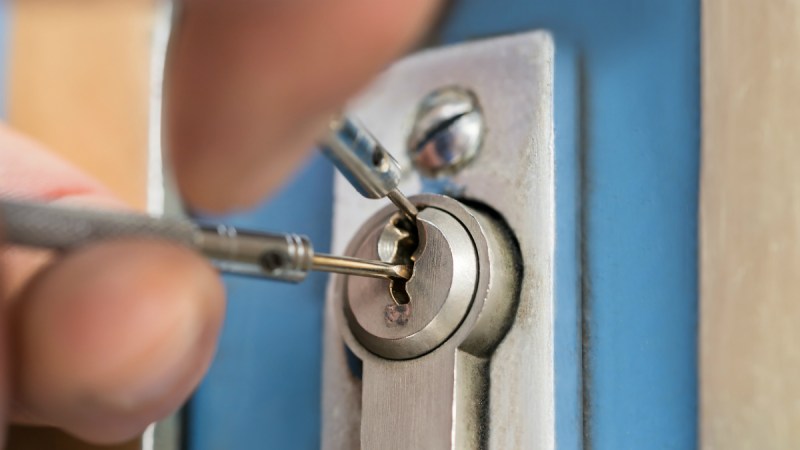
Admit it or not, we know you’ve most likely misplaced your house keys at some point in your life — maybe you left them at a friend’s house and are too uncomfortable having a spare somewhere in front of your house. Then what? Well, learning how to pick a lock could be handy during these times.
With some help from Ryan Brown, founder of Art of Lock Picking, you’ll be picking locks as if you’ve been doing it your whole life. Aside from being a flight instructor, Brown has more than 10 years of experience in picking locks. And he’s chosen to share this knowledge and love for the craft with all of us. You know, just in case the world ever goes crazy and our survivalist instincts kick in, lock-picking will go a long way.

What is lock picking?
While there is a vast variety of technical definitions surrounding lock picking, none quite resonate well with the absolute beginner. So, let us define it in terms of the layman.
Lock picking is the art of tricking a lock into believing that you are using that lock’s correct key.
Locks are extremely simple and senseless creatures that have but one fixed path of operation. This simplicity makes lock picking a very easy skill to acquire and implement for anyone looking to do so. But to acquire this skill, we must first learn the very basics of how a key works so that we can learn to mimic it.

How a key works
For the purpose of this guide, we will be looking at the most simple and commonly utilized lock today: the pin tumbler lock. This type of lock has been in use for over 6,000 years (yes, really!) and dates back to early Egypt. This type of mechanism can be found in more than 90% of the locks used around the world, making it the most practical suitor for our bypass shenanigans. So, let’s take a look at how they work.
The basic pin tumbler lock has 6 essential components:
- Housing: The housing contains the entirety of the lock’s functional components and is typically fixed into a door or padlock.
- Plug: The plug is a cylinder where we can insert a key and, unlike the housing, can rotate once the correct key has been inserted.
- Shear line: The shear line is the most important component when it comes to picking a lock. It can be defined as the physical gap between the housing and the plug.
- Springs: The springs have the simple task of pushing the pins down into the plug.
- Driver pins: The driver pins are the reason that a lock stays locked. When the correct key is not in the plug, the driver pins typically sit halfway between the housing and the plug. This creates a bind that restricts the plug from fully rotating, and in turn, keeps the device locked.
- Key pins: When a key has been inserted into the plug, the key pins make contact with the top of the key. Each key pin is cut to a different length that correlates directly with the pattern of the correct key. When this correct key is inserted, each key pin is pushed up flush with the shear line.
Additionally, the driver pins are pushed out of the plug and also remain flush with the shear line. It is at this moment, when the gap between the key pins and the driver pins is exactly equal to that of the shear line, that we can turn the key and disengage the lock.
As we can see, the goal of lock picking is to manipulate the pins so they no longer restrict the plug from rotating, just as a key does. Now, let’s get down to some good old-fashioned locksmithing.

Basic lock-picking tools
You’ll need two tools: a lock pick and a torque wrench. The purpose of the lock pick is to push the pins to the shear line. There are, of course, a ton of different styles of picks that can be used, and each of them uses their own technique.
However, because this is a beginner’s guide, we will be looking at the quickest and easiest method of lock picking, aka raking. This method of picking requires a “rake” style lock pick. Out of all the different styles of rake picks, the most popular is the snake rake. These picks have an elongated, jagged end that can manipulate multiple pins at once, just as a key does.
In addition to the pick, there is also the very important little tool called the torque wrench. This “L” shaped wrench accomplishes two very important tasks. Firstly, it gives us the leverage we need to rotate the plug, just as the key does. Secondly, and more importantly, it provides the torque necessary to set and hold the pins at the shear line as we pick them. Without this torque, the pins would simply fall back into the plug and the lock would forever remain locked.
Lock-picking sets like this fully loaded one (which even includes a clear padlock for practice) can be easily purchased on Amazon. However, be certain to check your local laws because some may prohibit the possession of lock picks. If you live in the United States, check out this guide to lock-picking laws. For the MacGyvers out there, basic pin tumbler locks can be successfully picked using bobby pins as lock picks.

Picking your first lock in 6 steps
So now that we have a fundamental understanding of the pin tumbler lock and the tools required to pick them, let us finally learn what we came here to learn. These six simple steps will guide you in how to pick a lock.
- Step 1: Insert the short end of your tension wrench into the bottom of the lock’s keyway. Using a finger, or two, apply extremely light pressure on the wrench in the direction that you would naturally turn the key (typically clockwise). Continue to hold this pressure on the wrench throughout the remainder of these steps. *Note that understanding exactly how much pressure to apply is what separates the novice from the master. Tension is the single most important technique that can only be developed through practice.
- Step 2: Still continuing to apply slight pressure on the wrench, take your rake pick, insert it into the keyway, and push it all the way to the back of the lock.
- Step 3: Next, apply upward pressure to the pins with the end of your rake and gently snap the pick out in a scrubbing motion. Be certain to bump all the pins on your way out.
- Step 4: If a reasonable amount of tension has been applied, several pins will be set at the shear line and the lock’s plug will have slightly rotated. But take note that this rotation to the novice will likely be unnoticeable.
- Step 5: Once again, insert your pick into the back of the lock and repeat the motion of scrubbing the pins. Repeat this process until all the pins have been set. However, if after five or six scrubbing, the lock doesn’t open, release the tension on the wrench and take care to listen for pins to drop. If you don’t hear any drop, it is a good indicator that you were applying too much pressure on the torque wrench. Start over by applying a different amount of pressure on the wrench and re-raking the pins.
- Step 6: Once you have found an appropriate tension and set all the pins, the plug will give and allow you to fully rotate it with the torque wrench, just as if the correct key was used.
Congratulations, you have successfully picked your first lock. Now, don’t go practicing these tips on houses in the neighborhood — that’s called breaking and entering. And that’s a crime.

It’s so simple, a WHAT can do it?
OK, so we’ve just shown you how to pick a lock and how easy it is. But don’t get cocky, because you’re not the only one out there with lock-picking skills. In fact, at least one animal is likely better than you at picking a lock, and it probably comes as no surprise that it’s the raccoon.
If you’ve ever lived in the suburbs or near any kind of wooded area, you’ve probably encountered raccoons before. The little “trash pandas” come out at night to raid whatever they can for food. If you’ve ever had to clean up your dumped-over trash can in the morning, you can probably thank (or, more likely, curse) a raccoon.
Well, it turns out that raccoons have those little burglar masks for a reason — they’re pretty good at picking locks. According to the Missouri Department of Conservation, raccoons show a knack for breaking into stuff. “Their long fingers on their front paws are perfect for picking locks and latches,” the department wrote.
And they can pass on their criminal knowledge. “Once a raccoon learns how to pick locks, it will remember how to open them the next time,” the department wrote. “Young raccoons may then learn these techniques by mimicking other raccoons.”
So, next time you’re locked out of your house, try out your lock-picking skills, and if you’re having trouble, find a raccoon; maybe they can help you out.
Editors' Recommendations
- The 20 best first date ideas that are fun and fresh for couples
- Spring cleaning time: How to organize (in 6 easy steps) and clean your closet like a pro
- The 7 best classic fantasy books to get lost in
- From Gilda Radner to Ali Wong, these are the best female comedians of all time
- Want to live in a tiny home? Here’s how much it would really cost, land and all



